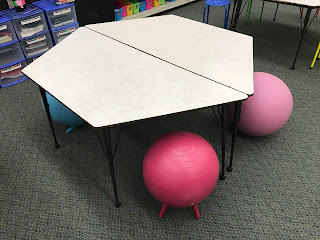So many teachers are spending a lot of time on online video call platforms to connect with students right now. In addition to our remote learning on Google Classroom, I am hosting two meetings a week with my homeroom students, just to connect, play games, and check in on them. We are not doing any teaching during our calls, so I am quickly running out of things to talk about and games to play with my students virtually.
I have put together a list of games, topics and themes to do with students virtually.
I've also added a link to a freebie at the end to one of the games I made for my students to play!
Topic Questions: Some days, I provide a topic to students ahead of time to think about. Then, we go around to each student and let them share. Between this, general conversation and allowing time for any questions, that can usually fill up my 30 minute call.
- What is something you miss doing?
- What is the best part of being at home?
- What is something you're looking forward to?
- What advice do you have for your classmates to make this time at home easier?
- What are you reading?
- What book recommendations do you have for others?
- What technology have you been using during this time at home?
Theme Calls: You can have students participate in the theme, then go around and share what they are wearing or why they chose what they did.
- Crazy hair
- Wear a hat
- Sport Team - wear a jersey or colors of your favorite team
- Costume - pull out an old costume to wear to the call
- Crazy socks - may be a little harder to show on camera, but could still be fun
- Wacky Outfit
- Pajamas
- School spirit
Activities:
- Show and Tell - bring an item to share
- Bring a Guest - invite a family member in your house to join the call and introduce them to the class
- Would You Rather - See my freebie at the end! :)
- Scategories
- Scavenger Hunts - There are a lot of ideas floating around for this one. You could theme it to your subject or make it random. You can also do different themed scavenger hunts on different days.
- Read a story
- Do a science experiment for them or have them share one they've done
- Share a simple recipe
- Share a website - Find a new game website or a student-friendly research page
- Do a GoNoodle
- Family Game Night - I saw this idea somewhere, and I'm working out the details of planning this. Possible future freebie!
- Learn a dance together - TikTok dance?! ;)
Guests: Invite a guest to also be on your call and share with students.
- Specials teachers
- Guest readers
- School counselor
- PE Teacher
- An essential worker, first responder or nurse that you know that you could have on to have the kids thank
Comment below if you have other ideas to share with other teachers! We've got to all help each other out during these crazy times.







































